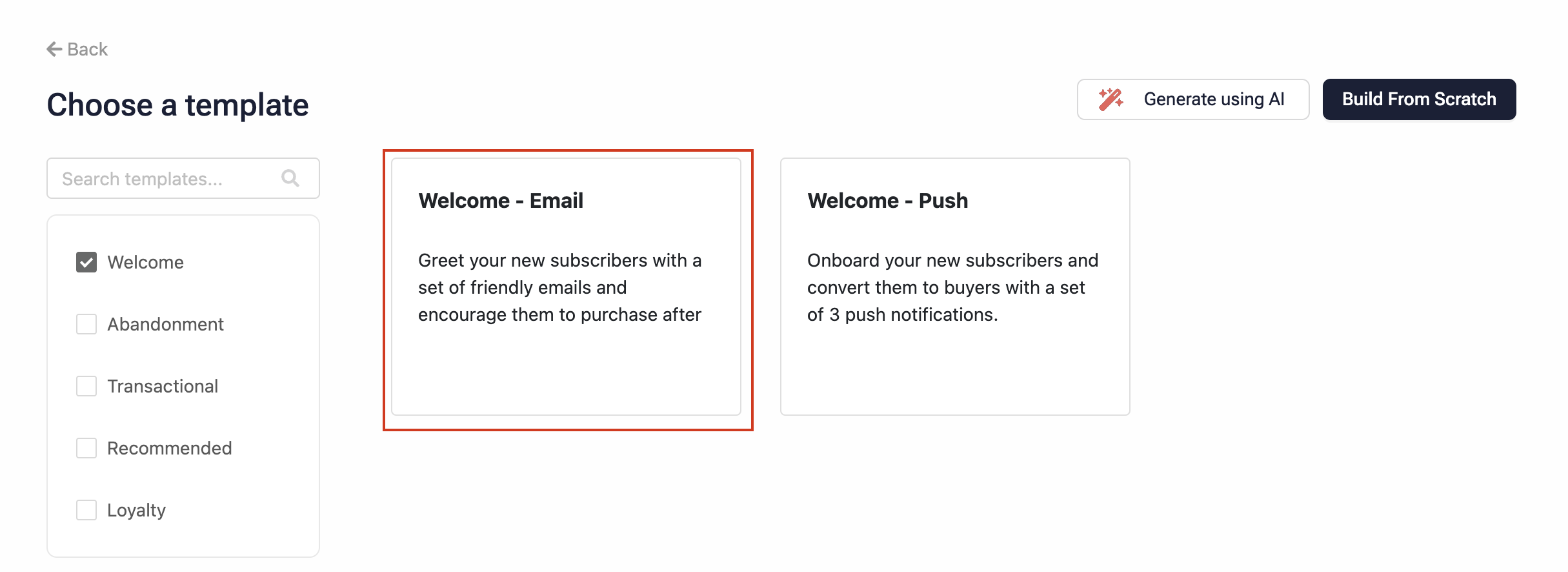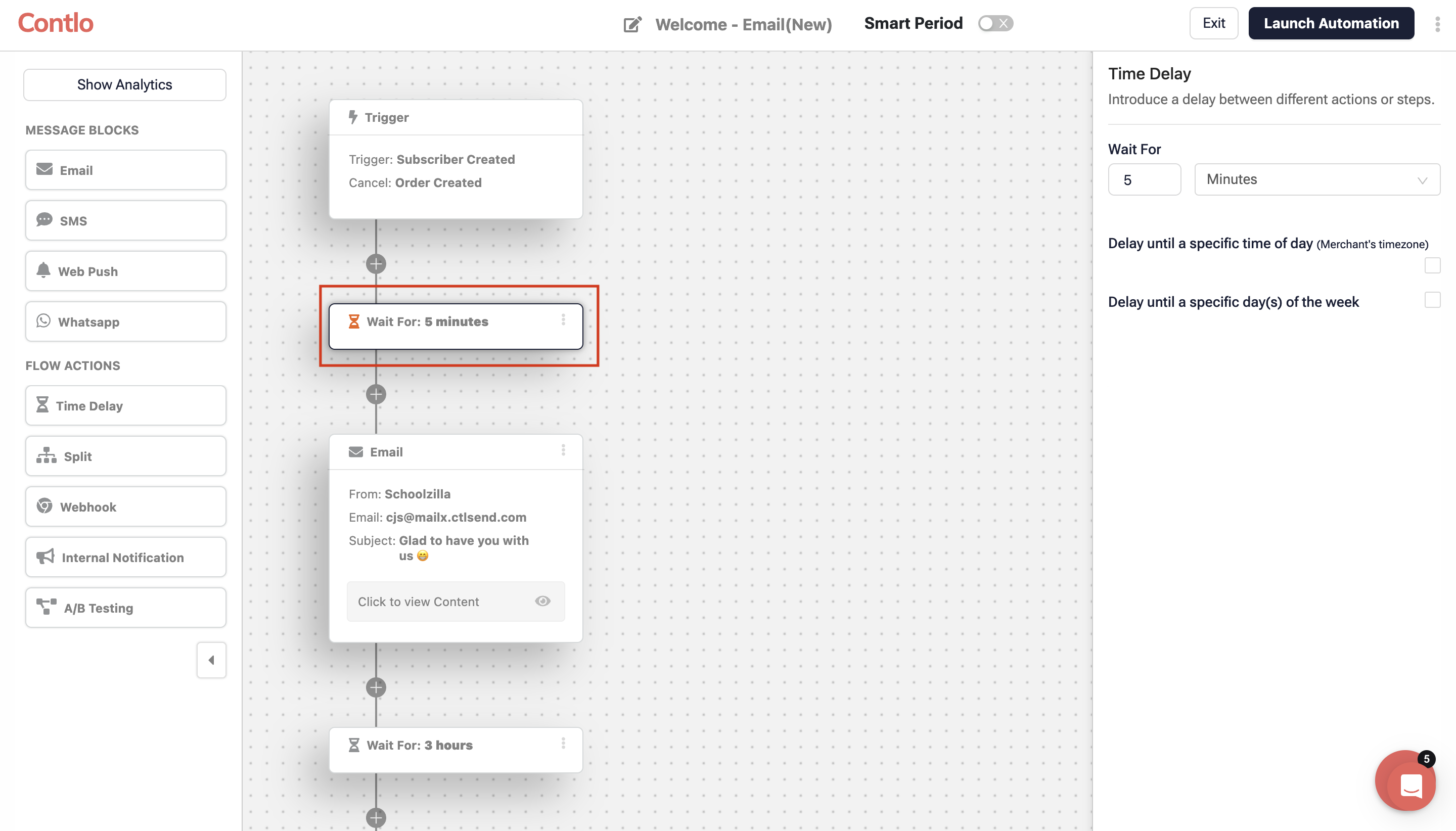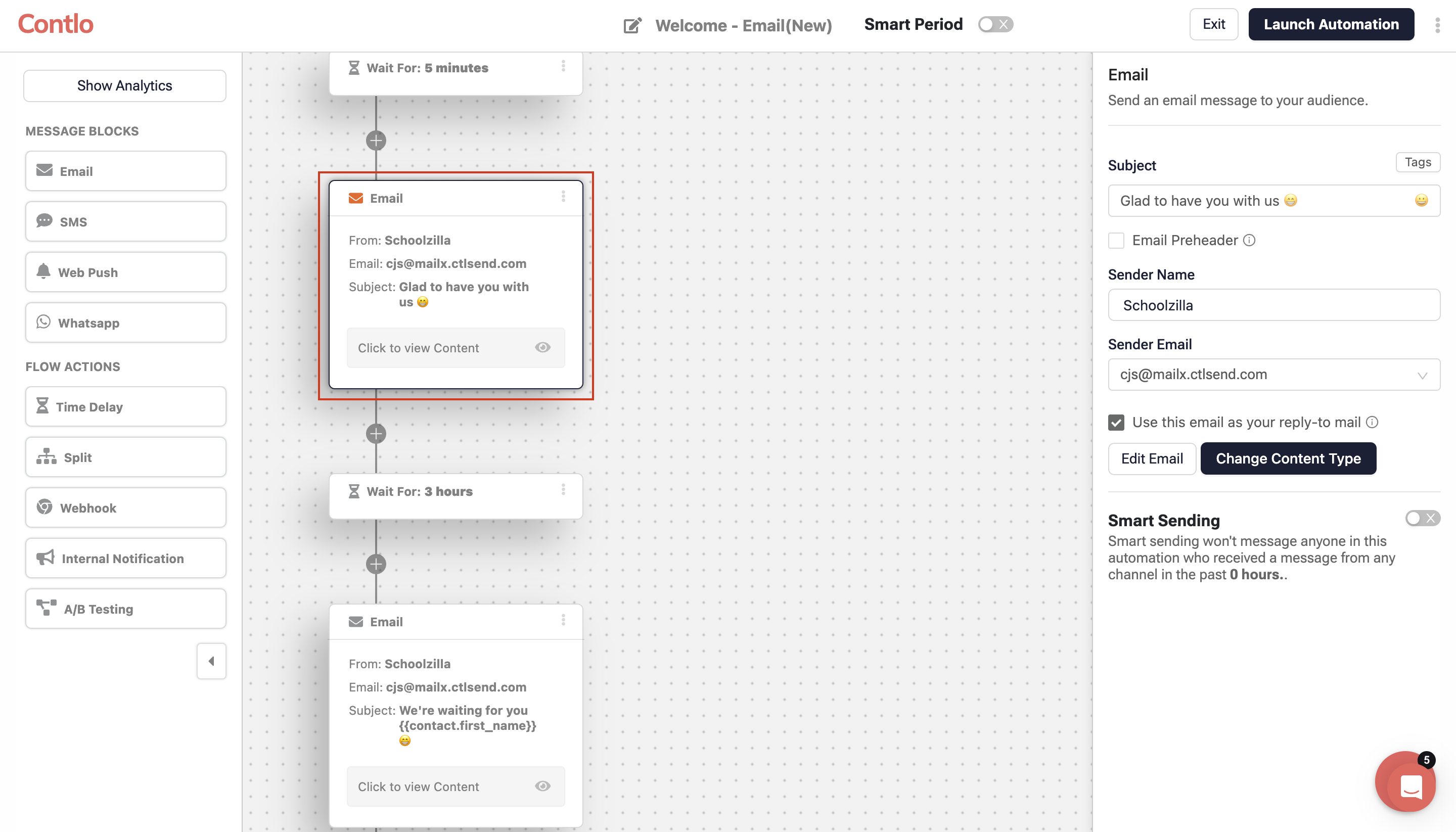Create a Welcome Email Automation
Follow the steps below to create a welcome Automation for your customers:
-
Navigate to the Automations section from the sidebar.
-
On the Automations page, click the Create Automation button. You would land on the Choose a template page.
-
On the Choose a template page, search and select the Welcome - Email template.

-
Click Use Template on the template preview modal. It opens the Automation editor preloaded with the selected template.
Configure each block as per your use case. Each block is explained in detail below:
Template blocks
-
Trigger: A trigger is an event that starts or stops the automation. To set up a trigger for the Welcome Email, follow the steps below:
-
Trigger: Select the Trigger block and set the trigger event on the right pane from the Trigger dropdown. In this template, it is set to Subscriber created which is an event fired when a user enters his credentials on your platform.
-
User Filter: This filter defines what category of customers should receive this message. For example, by adding the user filter set to country Argentina, the Automation workflow triggers only for customers that provide this country at the checkout page or subscribe to the Signup form that determines your customers' location automatically.
-
Cancel Trigger: Set an event in the Cancel Trigger section to stop the automation. In this template, it is set to Placed order which is an event fired when a customer places an order on your platform.

-
-
Time Delay for first Email: Time delay, a flow action, is waiting time for the next block to work if the trigger activates. In this case, when the trigger gets fired, the wait time is set to 5 minutes, which means the upcoming Email block activates after 5 minutes of trigger activation.

-
Welcome Email: This block gets activated after 5 minutes of trigger activation. In this block, define the details of your Welcome Email. Select the block and configure the following on the right pane:
-
Subject: Enter the subject of your Email.
-
Email Preheader: Select this checkbox to add an Email preheader that appears along the subject in the customer's inbox.
-
Sender Name: Enter the sender's name that appears on the mail.
-
Sender Email: Select the Email ID you want to send the mail. Select Use this email as your reply-to mail checkbox if you want the same Email ID to receive customer replies.
-
Edit Email: Update the information on the pre-selected Email template. It opens up the Email editor. Add your Logo, company introduction, and a personalized message for the customer.
-
Change Content Type: If you don't want to use the pre-selected Email template, click this button and create an Email from scratch.
-
Once configured, a Welcome Email is sent to the customer on trigger activation.

-
-
Time Delay for Follow-up Email: After sending the first Email to your customer, set a time delay before sending the follow-up Email.
- By default, it is set to 3 hours, but you can edit it as per requirement. This delay gives the customer time to analyze your platform and take action (place an order).
- If the cancel trigger event gets activated during this Time delay, the automation skips the further steps and exits.
-
Follow-up Email: This Email block gets activated if the trigger is still active and the time delay of 3 hours is completed. Define the parameters and edit the Email content to nudge the customer to place an order on your platform.
-
Time Delay for Last Email: This flow action sets the time between the follow-up Email and the last Email you send to your customer for acquisition.
- By default, it is set to 6 hours. It's recommended to extend the time gap before sending your last Email to give the customer sufficient time to explore your platform thoroughly.
- If the cancel trigger event gets activated during this time delay, the automation skips the further steps and exits.
-
Last Email: This Email block gets activated if the trigger is still active and the time delay of 8 hours is completed. This Email is the final attempt to nudge your target customer to purchase on your platform. Edit the Email content accordingly, highlighting the customer testimonials, bestsellers, etc. to convince the customer.
Updated 2 months ago
